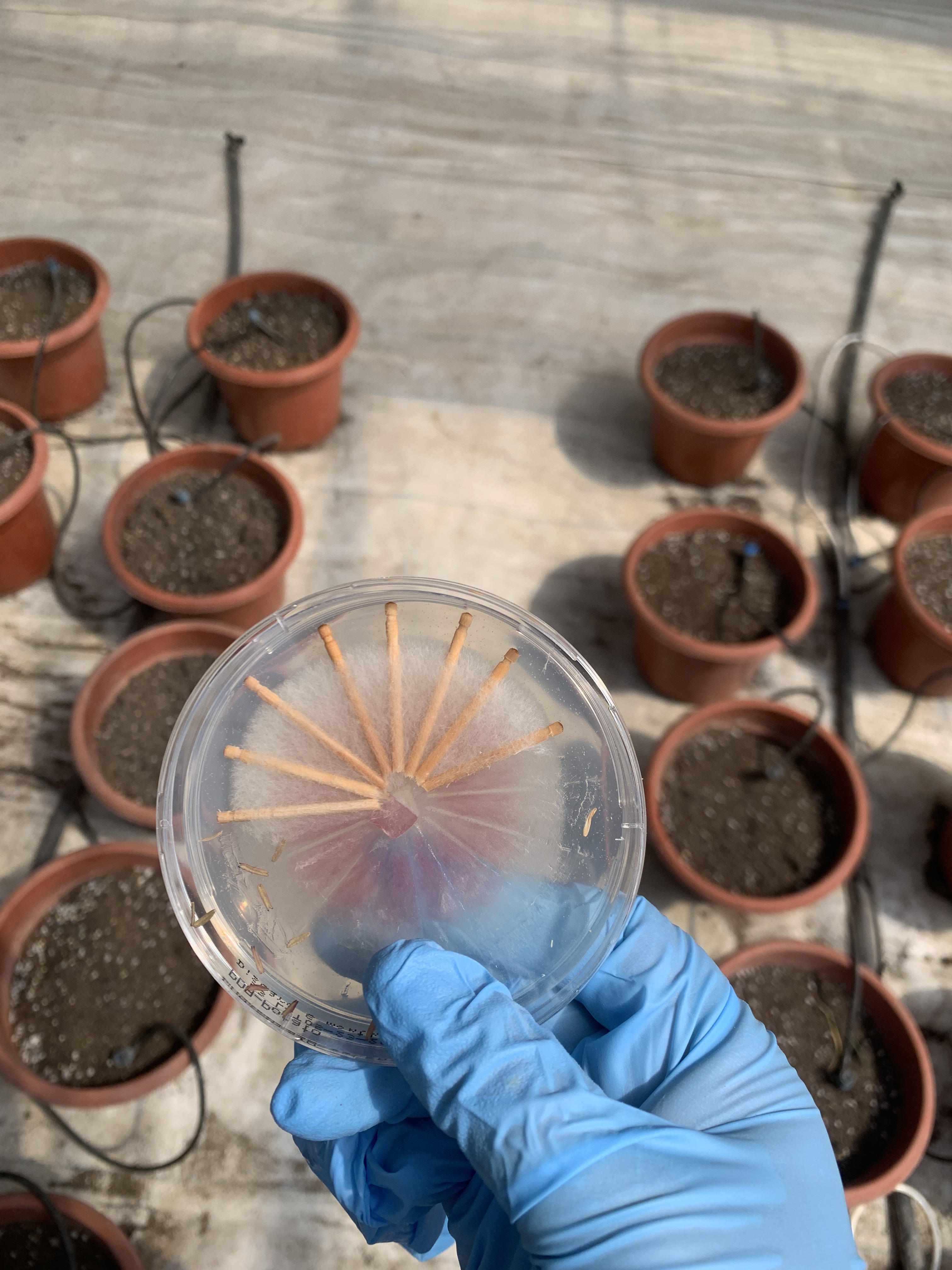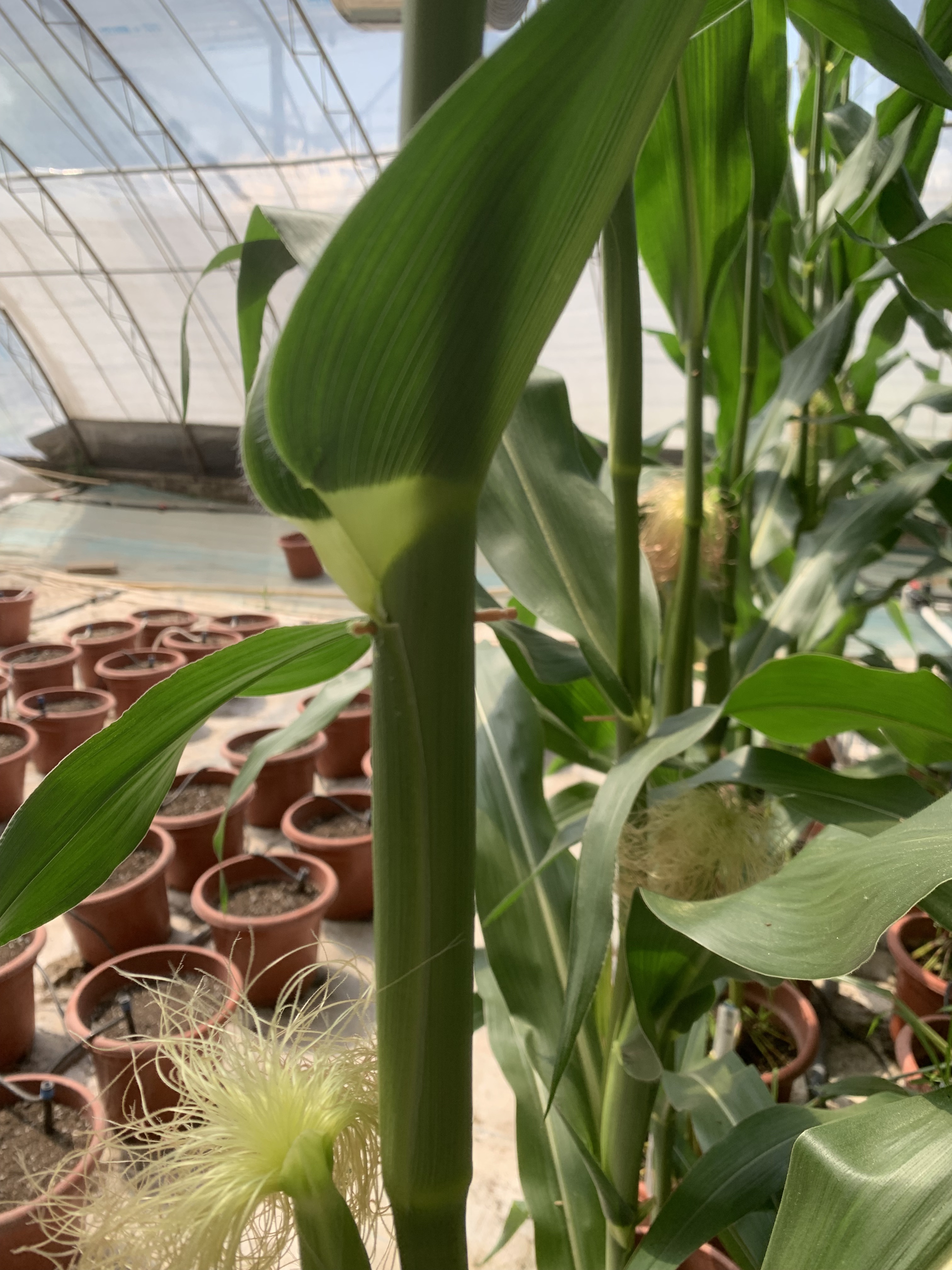English
Stem rot
Stem rot is a disease caused by a fungus infection in the stem of crop plants. Fungus that causes stem rot are in the Rhizoctonia, Fusarium or Pythium genera. Stem rot can readily infect crops that are in their vegetative or flowering stages. The disease can survive up to five years in the soil. Symptoms of stem rot includes staining of infected area, reduced crop yield and crop failure. The disease can be spread through the use of unfiltered water as well as unsterilized tools. Also leaving previous dead roots in soil can increase the risk of stem rot. Spores can also enter the plant through injured stem tissue on the plant including from insect attacks. The fungus impedes stem functions like transporting nutrients. It can cause water to leak through the lesions of stem tissue. Common infected crop plants are soybeans and potatoes. An issue with maintaining this disease is the lack of management by crop producers. Producers of soybeans tend to not manage for the disease because it is not normally yield limiting in a large area. Fungicides can be used to manage the disease as well as burning the crop after harvest or letting it decompose.1
Stem rot is a destructive disease that affects the cultivation of corn (maize) and causes significant losses. It is characterized by the soft and moist decay of the stem, which impairs the growth and yield of the plants. This disease is caused by fungal pathogens and prefers a humid, moist environment.(See below picture, taken in 2024)
Therefore, inoculate specific fungi to induce maize stem rot is important for breeding disease resistant varieties. I don’t have a background in plant diseases. I learned this method from a colleague and documented it to enhance my understanding.
Methods
Place the autoclaved toothpick into the medium containing fungi and incubate. (See Left Picture)
Inoculation
1.Dig a small hole in the maize stem that matches the size of the toothpick.
2.Remove the toothpick from the medium and insert it into the hole.(See Right picture)
日本語
茎腐れ病
茎腐れ病は、作物の茎に真菌が感染することで発生する病気である。茎腐れを引き起こす真菌は、リゾクトニア属、フザリウム属、またはピシウム属に属する。茎腐れ病は、作物が生育期または開花期にあるときに容易に感染する。この病気は土壌中で最大5年間生存することができる。茎腐れの症状には、感染部位の変色、収量の減少、作物の枯死が含まれる。この病気は、未処理の水や消毒されていない農具を使用することで広がる可能性がある。また、前作の枯れた根を土壌に残すことも、茎腐れのリスクを高める。胞子は、植物の茎に傷がある部分、例えば虫害によっても侵入することがある。真菌は茎の栄養輸送などの機能を妨害し、茎組織の病変から水が漏れることもある。一般的に感染する作物は大豆やジャガイモである。この病気の管理が難しい理由の一つは、農家による管理不足である。大豆の生産者は、この病気が広範囲で収量に大きな影響を与えることが少ないため、通常は管理しない傾向がある。病気の管理には殺菌剤の使用や、収穫後の作物の焼却、または自然分解が効果的である。
茎腐れはトウモロコシ(玉蜀黍)の栽培に影響を与える破壊的な病気であり、大幅な損失をもたらす。茎の柔らかく湿った腐敗によって特徴づけられ、植物の成長と収穫量に支障をきたす。この病気は真菌病原体によって引き起こされ、湿気の多い湿潤な環境を好む。(下の写真を参照、2024年撮る)
そのため、特定の真菌を接種してトウモロコシ茎腐れ病を誘導することは抗病品種の育成に非常に重要である。私は植物病理の専門知識を持ってない。この接種方法は同僚から学び、知識を深めるために記録する。
方法
オートクレーブ処理したつまようじを真菌を含む培地に入れ、インキュベートします。(左の写真を参照)
接種
1.トウモロコシの茎に、つまようじのサイズに合った小さな穴を掘る。
2.培地からつまようじを取り出し、その穴に挿入する。(右の写真を参照)
Reference
Wiki: Stem rot https://en.wikipedia.org/wiki/Stem_rot ↩



